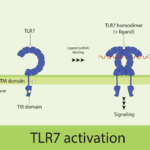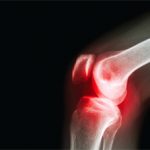Pain with Low Inflammatory Synovitis
Next, Dr. Bridges discussed a paper that hints at why patients with RA who do not have active synovitis may still experience joint pain and tenderness.
Bai et al. identified a group of more than 2,200 genes that are preferentially expressed in the synovial tissues of patients with RA and low inflammatory synovitis but significant joint pain. The researchers then used a machine learning approach to identify a set of 815 pain-related genes. They found that these genes are most highly expressed in the lining layer of synovial fibroblasts. Moreover, pain scores were positively associated with expression of these pain-related genes among patients with established RA and low inflammatory synovitis. In contrast, this association was not seen among patients with RA and high inflammatory synovitis.8
Dr. Bridges explained that these findings may help explain the mechanism underlying pain and tenderness in patients with RA without synovitis and that these pathways may provide targets for novel treatments to alleviate joint pain in patients with RA and other chronic forms of arthritis.
Why Autoimmune Diseases Are More Common in Women
Dr. Bridges also summarized a study by Dou et al. that looked at why autoimmune diseases are more common among women than men.9 Among the possible reasons for this difference is X chromosome inactivation (XCI) in which one of the two X chromosomes in females is randomly silenced in each cell in early embryonic development to balance gene expression between XX females and XY males. XCI is regulated by Xist, a long non-coding RNA. Because several binding proteins, such as La/SS-B, are known autoantigens in autoimmune disease, the researchers used an inducible transgenic expression of Xist in male mice to introduce Xist RNP complexes and produce autoantigens.
In male mice models of lupus, those expressing transgenic Xist developed more severe multi-organ pathology than wild types. Additionally, reactivity of serum from human lupus patients to multiple components of Xist RNP complex was found to be higher than that of individuals from the general population. These findings would, therefore, support a model of autoimmunity in which expression of Xist and formation of the Xist RNP complex in females leads to changes in T and B cells and epigenetic changes that could lead to the production of autoantibodies.
In Sum
From start to finish, the session was enlightening and high yield. 2024 was clearly a big year for rheumatology, and 2025 promises to be the same.


